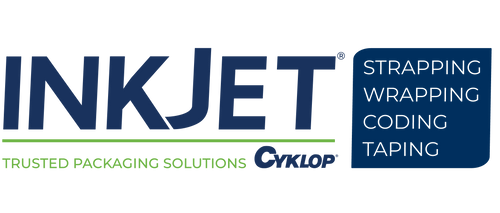Industrial Inkjet - Printing, Coding, Marking & Labeling
There is a need for well-placed, highly legible codes across the products of many industries. For example, food and beverage producers use codes like distributor-required expiration dates and lot codes; manufacturers of metal extrusions, lumber, and other production materials use batch numbers and barcodes to help ensure traceability and prevent counterfeiting; to meet FDA regulations, those working with prescription or over-the-counter (OTC) pharmaceuticals label their products per either the Physician Labeling Rule for prescription drugs or OTC monographs.
To create these codes, manufacturers often turn to inkjet printers, as thermal inkjet (TIJ) and continuous inkjet (CIJ) printers can mark a diverse variety of substrates in a consistent, reliable manner. Both TIJ and CIJ coders can create machine-readable barcodes and highly legible characters, which has led to their widespread use in such a wide variety of manufacturing industries.
To show the full capabilities of these printers, we have outlined some of today’s most common industrial inkjet printing applications.
Coding Food and Beverage Packaging
Go to any supermarket and pick up an item. Several different markings are bound to be found on the packaging that detail the name of the product, the title and location of the manufacturer, and the product’s net quantity. This information is all required per the Federal Trade Commission’s Fair Packaging and Labeling Act, a regulation that outlines the labeling requirements for all household consumer commodities. All pre-packaged food and beverage products are required to display this information under the threat of fines.
Additionally, retail channels, such as Amazon’s FBA or any number of national groceries, often require that food and beverages display lot codes, expiration dates, and barcodes to aid inventory practices and facilitate the vending process.
Food and beverage manufacturers commonly meet these requirements by utilizing industrial inkjet printers on their production lines. The speed and 24/7 operation capabilities of CIJ printers enable them to code products moving on non-stop conveyor belts, while the wide range of available inks and the non-contact printing method allows them to code a variety of materials that are curved, flat, porous, and non-porous. Accordingly, the following industrial inkjet printing applications are commonly fulfilled with CIJ printers:
- Glass bottle printing
- Plastic bottle printing
- Metal/aluminum can printing
- Pet food bag/can printing
- Plastic bag printing
- Corrugated cardboard printing
- Flexible film and foil printing
- Eggs and egg carton printing
- Retail ready packaging printing
- Pasteurized container (e.g., Tetra Pak) printing
Coding Construction MaterialsMetal extrusions, lumber, PVC pipes, and electrical components are all multi-purpose materials created in facilities with typically harsh conditions and quick-moving production lines. Consequently, manufacturers need resistant, reliable printers that can hold up against challenging environmental factors without sacrificing code quality or efficiency. CIJ printers, like the DuraCode, fulfill this role with ease. The IP55 stainless steel construction of the DuraCode enables the printer to operate at a temperature range of 41°F-113°F / 5°C-45°C, as well as resist dust and some humidity. In the world of TIJ printers, the Anser X1 is built with an IP66 enclosure, protecting it from dust, humidity, and even jets of water. This high level of protection doesn’t come at the expense of quality operation either, as the X1 is still able to print at a max speed of 300m/min, which rivals the typically faster CIJ models. Both CIJ and TIJ printers can code on:
|
Labeling Personal Care Products, Cosmetics, Pharmaceuticals, and Chemicals
As with food, all personal care and cosmetic goods are subject to the FTC’s Fair Packaging and Labeling Act. However, in addition to following the FTC’s law, cosmetic manufacturers must also comply with rules laid out by FDA’s Federal Food, Drug, and Cosmetic Act (FD&C). Under the FD&C, all cosmetics (i.e., any product intended to cleanse, beautify, or alter the user’s appearance) are required to display the following information on their labels:
- Directions on how to safely use the product.
- Warnings for any potential side effects.
- A list of all included ingredients.
- The § 740.10 warning.
The FD&C extends to all pharmaceuticals, both prescription and OTC, as well. Furthermore, pharmaceuticals are required to include product-specific information stipulated by the FDA. Chemical producers are not only subject to the FD&C, but a number of other regulations as well such as the Federal Hazardous Substances Act, depending on the chemical in question.
To meet these needs, producers of drugs, cosmetics, chemicals, and cannabis all commonly utilize inkjet printers for their versatility, reliability, and their ability to print on a wide variety of substrates.
Finding the Right Hardware and Ink Combo for Your Industrial Inkjet Application
Inkjet printers are powerful, versatile machines. However, not all printers are the same. Every model will have its own specializations with regards to application, line speeds, production conditions, and substrate compatibility. The same concept applies to ink formulas as well.
While finding the perfect combination for your unique production line can feel daunting, the expert team at InkJet, Inc. is available to help you find exactly what you need.
Here at Inkjet, Inc. we have been developing ink and working with printer hardware for over thirty years. When we partner with a client, we share the expertise that only comes from decades of industry experience. We consider the ins and outs of each customer’s operation and select a printing solution that meets every need.
For more information on industrial inkjet applications, inkjet applications for coding, or for any other questions related to printers and ink, contact InkJet, Inc. online or by phone at (800) 280-3245.



